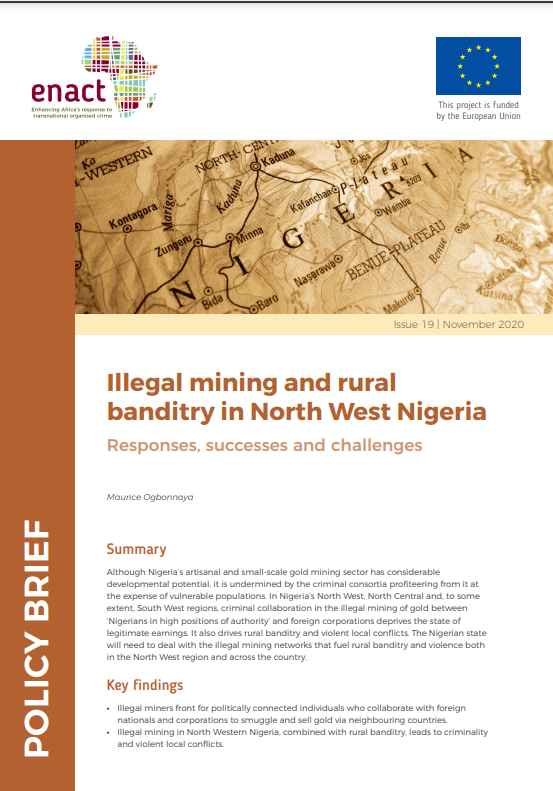By ENACT AFrica and INTERPOL
Over the last decade, criminal actors engaged in illegal mining have made huge amounts of illicit profits at the expense of countries’ economies, vulnerable populations, and the environment across the Central African region. In the region, gold is mainly produced by artisanal and small-scale gold miners and semi-mechanized companies. The exact quantities of gold produced is unknown to authorities; gold smuggling within and out of the region is well organized, systematic, and concerns the majority of gold leaving the region. The dominance of crime in the industry is enabled by a variety of factors affecting the entire gold supply chain. Illegal financing, by gold, cash, or other means, fuels the process. Fraudulent practices are a central aspect in land exploitation, and allow criminals to employ more effective methods for extraction and production, and to conceal the real quantity of gold produced. A network of illegal buyers collects gold from production sites and smuggles it to regional traders and refiners, who, in turn, are likely to obscure its real origin, ownership, and quantity. Gold is then smuggled out of the country or region mainly by air, often via Cameroon or Uganda, towards Asia (United Arab Emirates, India, and China). Smuggling gold to neighbouring countries allow criminals to benefit from discrepancies in export taxes. It also allows them to introduce gold onto the global market masking its origin, especially if originating from conflict zones. Information suggests that gold mining is largely controlled by criminal consortia composed of different actors, who, collectively, benefit from criminal synergies: members of organized crimes groups (OCGs) and /or corrupt officials in high-ranking positions, economic players, and non-state armed groups in conflict zones. The presence of non-state armed groups in gold mining areas, who seek to finance their activities with the illicit proceeds from this natural resource, is likely to be controlled.
Paris: INTERPOL; ENACT AFRICA, 2021. 53p.







